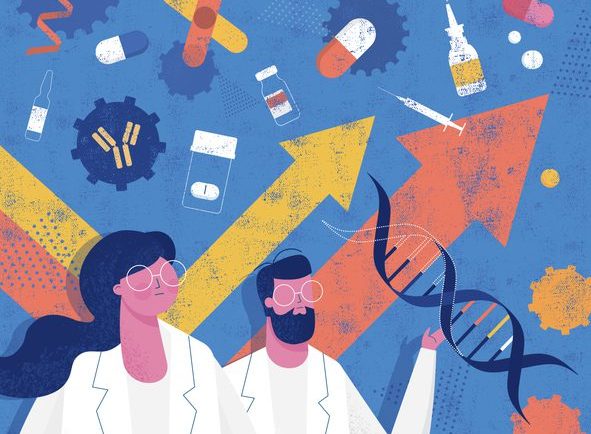- Join the Innovation Journey
- Our Platforms
Remodelling drug development

The challenge of delivering new vaccines and therapeutics to address the threat of established antimicrobial resistant pathogens, as well as emerging new threats, currently defines the global biotech sector.
Dr Shaun Pennington Senior Research Associate at LSTM
The challenge of delivering new vaccines and therapeutics to address the threat of established antimicrobial resistant pathogens, as well as emerging new threats, currently defines the global biotech sector.
By combining our understanding of key principals governing the activity of vaccines (immunogenicity) and therapeutics (drug exposure) with data from organoid models of infection, we hope to de-risk vaccine development and drug discovery to accelerate delivery of new interventions to the clinic.
Next generation organoid models
Some biological processes are specific to the human body and cannot be modelled in other animals. Whilst use of animal models in biomedical research has proved effective, the process has inherent limitations that frequently misdirect resources, and delay delivery of new vaccines and therapeutics to the clinic.
The advent of human organoid models has made it possible to re-create the architecture and physiology of human organs in remarkable detail. These 3D culture systems are more complex than traditional single-cell-type culture systems and represent a superior platform to study infection and treatment dynamics in a more physiologically relevant context. These models represent a real alternative to animal models of infection – supporting efforts to refine, reduce and replace animal models in research.
Organoids may be deployed to de-risk drug discovery programmes – providing a platform to more reliably identify compounds unlikely to have utility in the clinic due to limited efficacy and/or toxicity. They may also be used to assess the protective activity of new vaccines and vaccine formulations – providing a platform to assess the strength and longevity of immune responses targeting a wide variety of pathogens. These models are particularly useful in cases where the clinical severity of illness prohibits use of controlled human infection.
Organoid models in action
Organoid models have typically been used to assess drug toxicity. iiCON has dedicated one of its platforms to developing organoid infection models and demonstrating their utility for the study of factors that influence disease acquisition and disease progression as well as for the assessment of vaccines and therapeutics.
Our early work was conducted with Newcells Biotech, a Newcastle-based company that supplies organoids to support pre-clinical drug discovery. We established a SARS-CoV-2 lung organoid infection model which was used to study infection pathology in ways not possible using more simplistic single-cell-type culture systems, animal models or controlled human infection models.
More recently, we have established a partnership with bioengineering firm CN-Bio to demonstrate the utility of their multi-organ platform for use in infectious diseases research.
In parallel, we are working with Evotec to establish a Neisseria gonorrhoea organoid infection model. The incidence of N. gonorrhoea is increasing worldwide and demonstrating activity of compounds against Neisseria gonorrhea within human cells is a key criterion for approval of new therapeutics.
Currently the capacity to generate these data is very limited, representing a significant hurdle in delivering new treatments to the clinic. Our work with Evotec will seek to overcome this barrier by developing an intracellular infection model that can be used to accelerate therapeutic drug discovery efforts against this important human infection.
A model future
Organoid models are still a relatively new technology and there’s a need for standardised protocols governing the generation and characterisation of these tissues. We are working towards a direct comparison of organoid infection models against established ‘gold standard’ methods of assessment to facilitate widespread adoption of this technology and integration into regulatory approval pathways, thereby supporting the development of new interventions targeting a variety of infectious diseases.


